#ash borer disease
Text
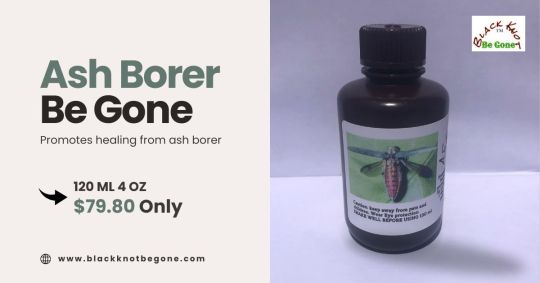
Ash Borer Be Gone is the best product for the prevention of ash borers in various plants. It is an all-natural product with NO pesticides or pharmaceuticals added and includes organic plant ingredients. If the tree is recently infected as the xylem system needs to be in place to feed the tree. Order the 120 ml 4 OZ only for $79.80. For product, inquiries feel free to contact: 607-343-7781.
0 notes
Text
God there are always so many tree diseases and invasive insects from Europe that find their way to our noble yet defenseless North American trees and completely destroy them >:(
#All the gigantic beautiful ash trees we have on our campus are getting slaughtered by invasive emerald ash borers :(#And those ash trees were planted to replace the beautiful elms that were killed by Dutch elm disease#It’s sad. So many native species are become endangered because of foreign diseases/predators#Our native species get replaced with European species that are able to defend themselves against this stuff. This too is colonization
5 notes
·
View notes
Link
June 28, 2022
The Canadian Council on Invasive Species (CCIS) gave a short presentation of the top 10 invasive species already in Canada or that could come to Canada from south of our border and that we therefore should be on the alert for.
The top 10 invasive species were as follows:
Asian long-horned beetle, Anoplophora glabripennis
Spotted lanternfly, Lycorma delicatula
Asian giant hornet, Vespa mandarinia
Emerald ash borer, Agrilus planipennis
Hemlock woolly adelgid, Adelges tsugae
Brown marmorated stink bug, Halyomorpha halys
Dutch elm disease, Ophiostoma ulmi and Ophiostoma novo-ulmi
Japanese beetle, Popillia japonica
Spongy moth (also LDD moth; previously gypsy moth), Lymantria dispar dispar
Lily leaf beetle, Lilioceris lilii
I have definitely seen at least three of these species and/or the damage they have done, specifically 4, 8, and 9.
You can help by reporting these species through, for example, iNaturalist. CCIS has their own project on iNaturalist, titled “I Spy and Identify Invasives / Je vois, J’identifie les espèces envahissantes”, which you can join: https://www.inaturalist.org/projects/i-spy-and-identify-invasives-je-vois-j-identifie-les-especes-envahissantes. The CCIS also has a whole webpage on how and where to report: https://canadainvasives.ca/take-action/report/.
#wildflowers of southern ontario#invasive species#canada#Canadian Council on Invasive Species#inaturalist#Asian long-horned beetle#Anoplophora glabripennis#Spotted lanternfly#Lycorma delicatula#Asian giant hornet#Vespa mandarinia#Emerald ash borer#Agrilus planipennis#Hemlock woolly adelgid#Adelges tsugae#Brown marmorated stink bug#Halyomorpha halys#Dutch elm disease#Ophiostoma ulmi#Ophiostoma novo-ulmi#Japanese beetle#Popillia japonica#Spongy moth#LDD moth#Lymantria dispar#Lymantria dispar dispar#Lily leaf beetle#Lilioceris lilii
12 notes
·
View notes
Text
More complete list of ways that websites and books about gardening shamelessly misinform and confuse people
Using any combination of cultivar names, species names, genus names, and common names to refer to plants, leaving well-intentioned gardening noobs fighting for their lives in a lawless wasteland. Just look at this Better Homes and Gardens article on salvia.
Salvia is a genus of plants containing hundreds of species, including culinary sage, rosemary, and many species used as ornamentals. The Better Homes and Gardens list ruthlessly mixes common names for sage species with cultivar names, without giving the binomial Latin species name at all for a single one...




...and refers to two totally different plants only as "purple sage" in the same listicle


On that note, acting like "variety" is just as important as, or interchangeable with, "species." Just read an article that said "some varieties of this plant can be invasive, so make sure to check which ones are prohibited in your area!" No. NO. No specific cultivar of an invasive plant species is going to be non-invasive. In fact, introducing new cultivars of an invasive plant will make the invasive species problem WORSE because that's new genetic material. 'Bradford' pears are invasive in the US, 'Cleveland' pears are also invasive, because they're BOTH PYRUS CALLERYANA, but the website you're buying them off of doesn't SAY that, AUGHH
Referring to plants that are enthusiastic or aggressive growers as 'invasive.' I falsely believed so many native species were invasive simply because some dumbass article decided to call them "invasive" for the crime of being able to grow in a lawn. The same websites will turn around and say that a 100% virulent invasive species "can become aggressive in some gardens" WHSFDHHKKK???
Gardening books describing a gorgeous native flower that doesn't die instantly when you think a negative thought about it: "Invasive. Evil. Kill on sight." Gardening books describing one of the worst known invasive plant species in human history that's decimating ecosystems as we speak: "This plant can be a teensy weensy bit vigorous."
totally failing to explore what it means for a cultivar of a plant to be "sterile." Here's the thing. The 'Bradford' pear was supposed to be sterile, but it was not, the cultivar was just made up of clones of the same plant, and most plants can't fertilize themselves. When another cultivar of Pyrus calleryana is planted close to it, such as the 'Cleveland' pear, surprise surprise, THEY AREN'T STERILE.
IIRC it is possible to produce truly sterile cultivars by breeding a plant that can't make seeds/fruits and cloning those plants by vegetative propagation. A cultivar of cloned, genetically identical plants with completely unchanged reproductive ability is NOT STERILE, it is just banking on no other cultivars of the plant ever existing nearby. Which is deeply stupid.
Yes, "cultivars" (the names in single quotation marks next to the name of the plant in a nursery label) are generally just groups of clones of the same founding individual. I'm not a fan of cultivars because they're basically Petri dishes for breeding disease. E.g. The Emerald ash borer was able to so thoroughly decimate ash trees in the USA partly because the gene pool of planted ash trees in American cities was 2-3 individual trees big. Now ornamental boxwoods seem to be dying off en masse in my area, and the reasons are probably similar.
796 notes
·
View notes
Note
Hi hi!! Idk how much you want to know about this but. It is actually illegal to grow currants (and their closely-related siblings, gooseberries) in the US as of 1911. They carried the white pine blister rust disease then, which threatened to kill off all the pines here, and so they were totally banned. And while white pine blister rust is much less of a problem in the present day, now both currants and gooseberries are intermediaries for a number of ash borers (invasive and destructive beetles), and you need permits to grow them if they aren’t outright banned in your state.
A museum I worked at went through the extremely arduous process of getting a permit for three measly gooseberry seedlings and WOW they are controversial plants here (also the berries look funky as fuck I recommend googling a picture). But they taste SO GOOD and so do currants and it’s a shame we don’t know about them more here in the US!!!
HOLY SHIT THIS IS FASCINATING AND AMAZING! THANK YOU SO SO MUCH FOR THIS WOW!! NATURE IS INCREDIBLE!!
#i did not expect to have my mind expanded in this way about this thing#thank you Boots pastille gummies for providing this opportunity#asks#Hannah hits the road
10 notes
·
View notes
Text
When to Call a Tree Removal Service
When to Call a Tree Removal Service
https://ift.tt/IoSza41
Trees are an asset to any landscape and provide wind protection, homes for wildlife, and aesthetic beauty. However, they can also become a liability when their health or safety deteriorates to the point of becoming a hazard to people and property. While strategic pruning may be able to save an unhealthy or damaged tree, there are some instances when a full removal is the best option.
A few key indicators that it’s time to call a tree removal service include:
Dead or dying trees: It’s easy to identify if a tree is no longer alive. A lack of leaves, brittle branches, and dry, peeling bark are clear warning signs. If left untreated, a dead or dying tree can pose a fire hazard and be a danger to passersby.
Severe pest or disease infestation: A severe infestation can leave a tree in such a poor condition that it’s no longer viable. This is often the case with pests like the emerald ash borer that can devastate an entire city block of a once healthy and vibrant tree.
Root problems: Compromised roots are a sign that it’s time to remove a tree. These root systems can cause damage to sewer lines, driveways, and building foundations. They can even upend sidewalks and disrupt underground utility lines.
Trees too close for comfort
Whether it’s because of an overgrowth or improper planting, sometimes it becomes necessary to remove a tree that is growing too closely to a house or power line. Leaving a hazardous tree in its current position can lead to costly damage in the event it falls during a storm.
Before calling a tree removal service, it’s important to prep your yard. Make sure vehicles are out of the way and that breakable items, such as potted plants or lawn ornaments, are moved away from the area. You should also create two escape routes for yourself and your family in the event that the tree does fall. The primary path should be directly opposite of where the tree is expected to fall and the secondary route should be no more than 45 degrees from the primary path. This will give you enough time to safely escape the area should the tree fall in an unexpected direction. It is always a good idea to have an experienced tree professional inspect your yard before any work is done. They will be able to determine the most cost-effective solution for you and your home. Be sure to get quotes from multiple companies and compare each aspect of their services, including service fees, timelines, and included services. Look for a company that specializes in residential tree care, as they’ll have fewer city-mandated service restrictions and will be better equipped to handle the job. Lastly, make sure the company has proper insurance coverage before hiring them for any work. This will ensure your property and investment is protected.
0 notes
Text
Dangerous Trees: When to Remove and Replace
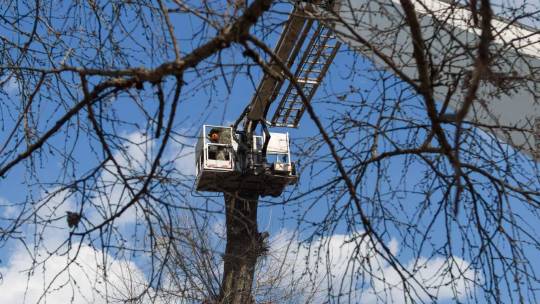
Trees can be wonderful assets to any landscape, providing shade, beauty, and environmental benefits. However, there are times when a tree can become a serious hazard and needs to be removed for safety reasons. Knowing when a tree has become dangerous and should be removed or replaced is an important part of responsible property maintenance.
One of the primary signs a tree has become dangerous is structural damage or decay. Trees can develop cracks, splits, or hollow areas in the trunk, branches, or root system over time. As a tree ages or sustains damage, these structural weaknesses make the tree much more likely to fail, potentially causing property damage or personal injury if it falls. Trained arborist can inspect trees and identify areas of structural concern.
Another warning sign is excessive leaning or an unstable base. Trees that are leaning at more than a 15 degree angle from vertical are at high risk of toppling, especially in high winds or storms. Likewise, trees with exposed, damaged, or decaying roots are more prone to uprooting. These trees should be removed before they fall and cause harm.
Disease and pest infestations can also compromise a tree's health and structural integrity to the point it becomes hazardous. Common issues like Dutch elm disease, emerald ash borer, or root rot fungi can spread through a tree's vascular system, gradually killing branches and the trunk. Infested or diseased trees that are in decline should be carefully monitored, and removed if they are no longer viable.
Of course, not all dangerous trees need to be completely removed. In some cases, regular professional pruning and maintenance can help mitigate the risks. Removing dead, damaged, or crossing branches and thinning out the canopy can go a long way toward improving a tree's structural stability and reducing the chances of failure. For trees with more advanced issues, however, full removal may be the safest course of action.
When a dangerous tree does need to be removed, it's important to hire a qualified, licensed arborist or tree care company to do the job properly and safely. Improper or amateur tree removal can lead to further property damage or personal injury. Professional arborists have the specialized equipment, training, and expertise to remove trees efficiently and minimize risks.
Once a dangerous tree removal Watertown SD, property owners should consider replacing it with a new, healthy tree that is appropriate for the site conditions. When selecting a replacement tree, it's wise to choose a species that is native to the local climate and has a track record of resilience. Fast-growing "volunteer" trees that spring up on their own are often less hardy and more prone to issues than carefully selected, nursery-grown replacements.
Maintaining the health and structural integrity of trees on your property is an important part of responsible ownership. By staying vigilant for signs of decay or instability, and taking prompt action to address dangerous trees, you can protect your home, your family, and your community from the risks of tree failure. With proper care and wise replacement choices, your property's trees can continue to be an asset for years to come.
Rugged Tree Service
507 829–4317
206 N Brook Ave, Porter Minnesota 56280
https://ruggedtreeservice.com/
Find Us: https://www.google.com/maps?cid=16359137231678289584
0 notes
Text
Tree Removal Today of St Paul
At Tree Removal Today of St Paul. We offer quality Tree service and will go a long way to ensure that your tree service needs are met. We are an expert arborist and our tree company has one of the best tree service experts available to assist with any tree work you might need including tree removal, stump grinding, tree trimming, and sick tree treatment like tree injections and other processes that work, Also In case of an emergency tree removal we are available 24/7. If your trees are infected with ash borer we recommend completely removing them ASAP to prevent the spread. There are also many other tree diseases that can affect your tree's health. Not sure what to do? Get advise and a FREE quote from your St Paul tree care experts today.
Address: 519 Edmund Ave W. Unit 2, St Paul, MN 55103
Phone: (651) 478-2356
Website: https://www.treeremovaltoday.net
Business Email: [email protected]
Social:
https://www.facebook.com/Treeremovaltodayofstpaul
https://www.instagram.com/treeremovaltodaymn/
https://twitter.com/Treeremoval651
https://www.linkedin.com/in/matt-williams-0382bb24b/
https://www.pinterest.com/treeremovaltodaymn/
https://www.youtube.com/channel/UCuMHbDiRC-cGTjBiU8NvhRQ
https://www.yelp.com/biz/tree-removal-today-of-st-paul-saint-paul
https://pro.housecallpro.com/pro/account/company
https://www.tripadvisor.com/Profile/Treeremovaltoday
https://foursquare.com/user/1392355181
https://www.reddit.com/user/treeremovaltodaymn
https://www.brownbook.net/my-profile/basic-info
https://superuser.com/users/1727605/tree-removal-today-of-st-paul
Hours: 24 hours


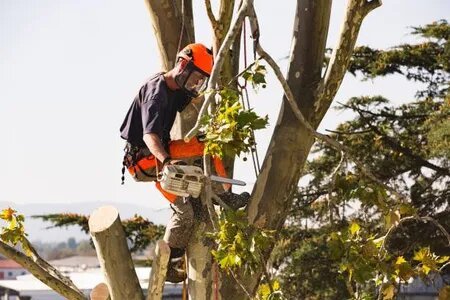
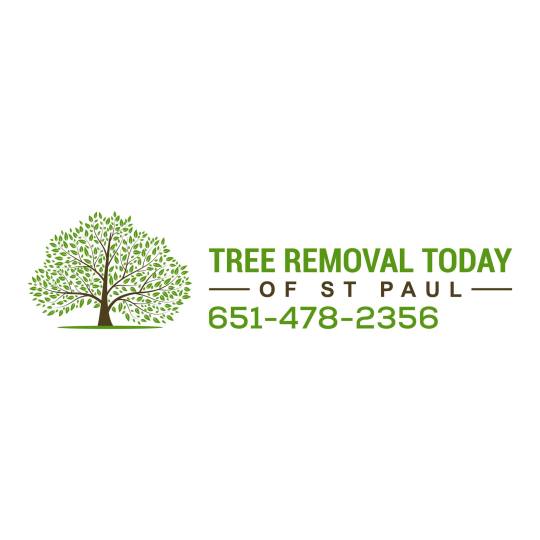
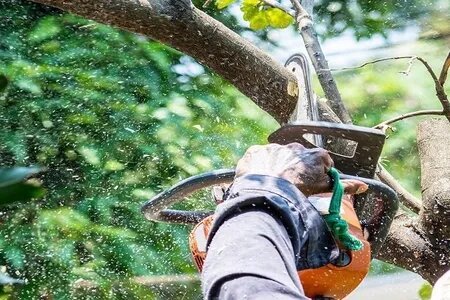
1 note
·
View note
Text
Its time to review your plant health care routine
If you're in the Pensacola area, then you have probably already experienced the need for having to remove a tree or stump or getting your tree's trimmed.
The cost of tree removal varies depending on a few factors, such as:
- The type of tree that needs to be removed
- The size of the tree
- The location of the tree
- The condition of the tree
Pensacola Tree Removal offers competitive pricing for our tree removal services.
For a full list of services Tree removal services visit https://treeservicespensacola.com/tree-removal-pensacola/ for a fast, friendly and reliable quote that you can count on.
This will help not only beautify your property but also is the safest way to do it.
Jay Goughnour
The offseason is a great time to review plant health care (PHC) recommendations for the upcoming year. The following are my top five tips, particularly as they relate to tree care.
Equipment Maintenance
The No. 1 tip is to prioritize equipment maintenance, particularly during the off-season. Thoroughly clean all equipment, inspect hoses and devices and ensure proper lubrication. Don’t overlook replacing worn parts like O-rings, seals, tubing and needles. Lastly, organize your inventory and restock supplies to be fully prepared when spring arrives.
EOPs
Take advantage of Early Order Programs (EOPs) and the significant discounts they offer. This approach helps maximize your bottom line by taking advantage of manufacturer and distributor discounts. If you’re able to put in a bulk order, you’ll have what you need for the entire year. Having a stocked inventory to work from will ensure that you have everything that’s required to get the job done on a moment’s notice.
PHC Scheduling
My third tip focuses on PHC timing and scheduling. Strategic planning for the upcoming seasons is crucial, emphasizing efficiency in schedule reviews. For example, addressing diseases like bur oak blight and fungal issues is best done during spring, along with applying plant growth regulators (PGRs). Summer provides a good opportunity for tackling pests such as emerald ash borer (EAB), Japanese beetle and two-lined chestnut borers. Fall is the prime season for fertilization and chlorosis treatments; PGRs can also be applied during this period.
Upselling
I also encourage upselling and positioning yourself as the expert. Seize opportunities on each property by not overlooking potential issues beyond the customer’s initial concern. For instance, during an EAB treatment, if you spot a chlorotic oak, or a linden tree showing signs of Japanese beetle or drought stress, don’t hesitate to mention it. As the expert, even if you don’t discover a specific issue, conduct a routine PHC check and share your findings. This proactive approach sets you apart from competitors, demonstrating your commitment to thorough service and potentially opening doors for additional business.
Safety
The final tip is a simple one — be safe. Personal protective equipment isn’t just a recommendation, it’s the law. You should always have plenty of gloves and safety glasses on hand. Winter is a good time to stock up so you’re never left empty-handed. Lastly, it’s critical to follow label instructions and always review rates to avoid overapplying.
Implementing these tips will contribute to your success, ultimately translating into increased profits for your business.
The post It’s time to review your plant health care routine first appeared on Landscape Management.
0 notes
Text
Why Is Actually Professional Parasite Control Important?

Specialist pest control is actually important for many main reasons, ranging coming from securing health and wellness and residential property to making certain ecological sustainability. Right here is actually a malfunction of why qualified bug control is actually needed:
Health and wellness RisksPests like mice, cockroaches, as well as bugs hold a variety of ailments that can easily be sent to human beings. As an example, rats may propagate leptospirosis and also salmonellosis, while bugs are known for sending diseases like malaria, dengue high temperature, and Zika virus. Professional kissimmee pest control helps mitigate these wellness dangers through successfully regulating and getting rid of pest populaces.
Allergic Reactions and also Respiratory System Problems
Bugs like dirt mites, roaches, as well as mice may cause allergies and exacerbate respiratory issues like bronchial asthma. Dirt mite feces, cockroach droppings, and rodent pollen can collect in interior atmospheres, bring about indoor air pollution. Expert pest control services can easily assist minimize allergen degrees and improve interior air quality, specifically for individuals with respiratory problems.
Property Harm
Pests can easily trigger considerable harm to properties, furnishings, as well as belongings. Termites, for instance, may silently ruin wooden establishments as well as endanger the integrity of buildings. Rodents gnaw on wires, protection, and also other components, posing a fire hazard. Specialist Kissimmee exterminator experts are educated to pinpoint bug infestations early as well as carry out successful measures to stop residential or commercial property harm.
Meals Protection
Bugs contaminate food items resources and also posture a danger to food items safety. In industrial setups such as bistros, convenience store, as well as food processing facilities, parasite problems can easily result in foodborne ailments and regulative violations. Qualified pest control companies aid businesses maintain strict sanitation requirements and follow health and wellness rules, protecting hygienics as well as image.
youtube
Community Health And Wellness Worries
Insects not only present health and wellness threats to people however likewise influence hygienics on a larger scale. Insects, for example, are vectors for deadly illness such as jungle fever, which affect countless people worldwide. Qualified insect control steps, featuring insect abatement systems, help in reducing the spreading of vector-borne diseases and guard hygienics.
Ecological Harmony
Some pests, such as invasive species, interfere with ecological balance and endanger native vegetation and animals. Intrusive bugs like the emerald ash borer as well as the Oriental longhorned beetle can ruin woodlands and also urban dark-green areas. Professional insect control initiatives target invasive varieties as well as help maintain biodiversity by controlling their populations and stopping their spreading.
Safety nets
Expert Kissimmee exterminator solutions not only address existing infestations yet likewise offer preventive measures to avoid potential troubles. By means of frequent evaluations, tracking, and also application of integrated pest administration (IPM) tactics, insect control experts help home owner determine prospective susceptabilities as well as take proactive steps to prevent insect invasions.
Tranquility of Mind
Knowing that your residential or commercial property is actually defended versus parasites delivers comfort for individuals, organizations, and also residential or commercial property supervisors. Professional bug control companies supply trusted remedies customized to the details necessities as well as obstacles of each residential or commercial property, permitting dwellers to focus on their activities without the worry of pest-related concerns.
Lastly, professional bug control is actually required for guarding human health and wellness, guarding residential property, guaranteeing meals protection, dealing with hygienics problems, maintaining environmental equilibrium, as well as delivering comfort. By relying upon the knowledge of parasite control specialists and executing successful parasite management tactics, individuals and companies may mitigate the risks related to insect attacks as well as produce healthier, safer atmospheres for all.
All American Pest Control
1101 Miranda Lane, Suite 131
Kissimmee, FL 34741
(321) 337-0919
Kissimmee Pest Control
1 note
·
View note
Text
Understanding the Emerald Ash Borer and Protecting Your Trees
Emerald ash borers are tiny, metallic-green beetles native to Asia that have become a formidable adversary for ash trees across North America, wreaking havoc and leaving a trail of destruction. Understanding the threat it poses and the measures to combat it is crucial for preserving the green canopy that graces our landscapes.

Identification and Lifecycle
The emerald ash borer is deceptively beautiful with its vibrant emerald hue. However, its lifecycle is anything but benign. Adult emerald ash borers lay eggs on the bark of ash trees. Once hatched, larvae burrow into the tree, disrupting its internal circulation system. This disturbance weakens the tree's structure, making it susceptible to diseases and other stressors.
Signs of Infestation
Detecting an emerald ash borer infestation in its early stages is challenging, but sure signs may indicate trouble. Thinning canopies, unusual woodpecker activity, D-shaped exit holes in the bark, and serpentine galleries under the bark created by larval feeding are all potential indicators. By the time these signs become apparent, the infestation may have advanced.
Impact on Trees
Ash trees have been particularly hard-hit by the emerald ash borer. These invaders disrupt the flow of nutrients within the tree, leading to wilting, dieback of branches, and eventually, the death of the entire tree. The economic and ecological consequences are profound, as ash trees play a vital role in many ecosystems and are commonly used in landscaping.
Spread and Geographic Impact
The spread of the emerald ash borer opens the door to human activities such as the transportation of infested firewood. Since its discovery in Michigan in 2002, the beetle has rapidly expanded its range, infesting ash trees in numerous states and provinces. The geographic impact is extensive, affecting both urban and forested areas.
Prevention and Management
Preventing the spread of the emerald ash borer is a collective effort that involves both proactive and reactive measures. Quarantine regulations on the movement of ash wood products, public awareness campaigns, and early detection programs are part of the prevention strategy. In cases of confirmed infestation, management strategies include the targeted use of insecticides, biological controls like parasitoid wasps, and, in severe cases, the removal and replacement of affected trees.
The Role of Certified Arborists
ISA-certified arborists play an essential role in the fight against the emerald ash borer. Their expertise allows for accurately identifying infestations, assessing tree health, and implementing appropriate management strategies. Timely intervention by arborists can sometimes save infested trees, but their primary role is often in guiding communities and property owners on preventative measures.
The battle against the emerald ash borer is ongoing, requiring continued vigilance and adaptation of strategies. Research into resistant ash tree varieties, improved insecticide formulations, and community engagement are essential components of a comprehensive approach. As we navigate this ecological challenge, we aim to mitigate the emerald ash borer damage and develop sustainable practices that protect our trees and their environments.
The emerald ash borers pose a significant threat to ash trees, demanding a united front in response. Through awareness, proactive measures, and the expertise of certified arborists, we can strive to preserve the beauty and ecological contributions of our ash tree populations, ensuring that the emerald ash borer's silent invasion does not become an irreversible tragedy for our landscapes.
0 notes
Photo
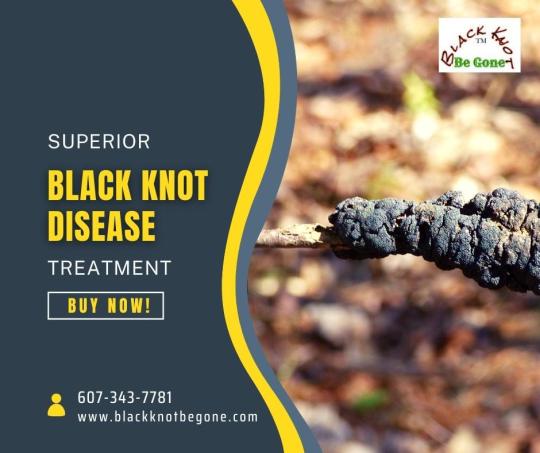
Black Knot Be Gone is specialized in providing unique products to prevent various black knot diseases in fruit trees, olive trees & grapevines. Now get complete fruit rot treatment from Black Knot Be Gone’s unique products safely promote healing of the fruit trees. Apply our qualitative products to the trees to see the results. Contact: 607-343-7781.
To order this product please visit: https://www.blackknotbegone.com/products/copy-of-black-knot-be-gone-%E2%84%A2-safely-promotes-healing-of-the-whole-tree-for-black-knot-disease-all-organic-plant-ingredients
0 notes
Text
9 Reasons When Tree Removal Services Become Essential

Hey there, fellow tree enthusiasts! Today, we will dive deep into the world of tree removal services. You might be wondering, "Why is tree removal so important?" Well, my friend, let me tell you that there are numerous reasons why tree removal Croydon services become essential in certain situations.
From safety concerns to overgrown trees, disease and infestation to storm damage, property development to leaning or unstable trees, root damage to dead trees and stumps, and even the importance of tree replacement – we've got it all covered.
So, grab a cup of coffee, sit back, and explore the nine reasons tree removal services become essential.
1. Safety Concerns
When it comes to trees, safety should always be a top priority. Trees, especially those dead, diseased, or damaged, can pose significant risks to people and property. A dead tree, for instance, can quickly become a falling hazard during strong winds or storms. Additionally, diseased or damaged trees may have weakened branches that could potentially break and cause injury or property damage. Professional tree removal Croydon services are necessary to ensure everyone's safety. These experts have the knowledge, skills, and equipment to remove hazardous trees safely and efficiently, minimising potential risks.
2. Overgrown Trees
While trees are a wonderful addition to any landscape, they can sometimes become a nuisance when they grow too large and overtake their surroundings. Overgrown trees can obstruct views, block sunlight, or damage nearby structures. In worst-case scenarios, they can interfere with power lines, leading to power outages or dangerous situations. In such cases, tree removal Croydon services can effectively address these issues. By carefully removing the overgrown trees, the landscape can be restored to its former glory, allowing for better views, increased sunlight, and reduced risk of damage.
3. Disease and Infestation
Like humans, trees can also fall victim to various diseases and infestations. Common ailments such as Dutch Elm Disease, Oak Wilt, or Pine Wilt can wreak havoc on tree populations if left untreated. Additionally, pests like the Emerald Ash Borer or Gypsy Moth can cause significant damage to tree health. If these diseases or infestations are not promptly treated, they can spread to other healthy trees, leading to a decline in overall tree health. In such cases, tree removal is crucial in preventing further infestation and disease spread. Removing the affected trees significantly reduces the potential for spreading these issues to healthy trees.
4. Storm Damage
Severe weather conditions, such as storms or hurricanes, can have a devastating impact on trees. Strong winds can uproot or break branches, causing damage to nearby property or posing a threat to human safety. In the aftermath of a storm, it is essential to call upon professional tree removal services to assess the damage and remove any fallen or damaged trees. This prevents accidents and further property damage and allows for the cleanup and restoration of the affected area.
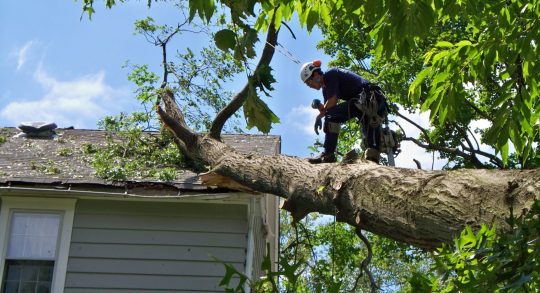
5. Property Development
Tree removal sometimes becomes necessary for property development or construction projects. While this may seem unfortunate, there are times when it is essential for progress. However, it is important to note that preserving some trees is highly desirable for ecological or aesthetic reasons. In such cases, tree removal services can work hand in hand with property developers to identify which trees can be safely preserved and which need to be removed to make way for the project. This ensures a balanced approach that respects both nature and development.
6. Leaning or Unstable Trees
Have you ever come across a tree that seems to be leaning precariously or appears to be unstable? Well, my friend, that tree is a potential accident waiting to happen. Leaning or unstable trees pose a significant risk to people and property. These trees can fall unexpectedly due to root issues, age, or external factors, causing severe damage or injury. To prevent any potential accidents, calling upon professional tree removal services is crucial. These experts can safely and efficiently remove the leaning or unstable trees, ensuring the safety of the surrounding area.
7. Root Damage
Sometimes, the stability of a tree can be compromised due to root damage. Root damage can occur for various reasons, such as construction, excavation, or disease. When the stability of a tree is compromised, it can pose a risk to nearby structures and the tree itself. In such cases, addressing root damage often involves removing the affected tree. Professional tree removal services can assess the situation, determine the extent of the root damage, and safely remove the tree if necessary. By taking prompt action, further damage to the tree and its surroundings can be prevented.
8. Dead Trees and Stumps
Dead trees, with their bare branches and lack of foliage, are unattractive and pose potential hazards. These trees can easily become a falling hazard during storms or strong winds, putting people and property at risk. Additionally, the presence of dead trees can detract from the overall aesthetic appeal of a landscape. It is important to remove dead trees promptly to minimise potential risks and improve the area's visual appeal.
Along with removing dead trees, stump removal is also essential. Stumps can be a tripping hazard and lead to future tree growth. By removing the stumps, safety is improved, aesthetics are enhanced, and the prevention of future tree growth is ensured.
9. Tree Replacement
While tree removal is sometimes necessary, replacing the removed trees with new ones is equally important. Planting suitable tree species helps to maintain the ecological balance and improve local environments. Trees provide numerous benefits, including shade, oxygen production, and habitat for wildlife. By replacing removed trees, we can continue to enjoy these benefits while ensuring a healthy and vibrant ecosystem for future generations. So, after removing a tree, don't forget to plant a new one in its place!
Conclusion
Phew! We've covered a lot in this detailed blog on the nine reasons tree removal services become essential. We've explored everything from safety concerns to overgrown trees, disease and infestation to storm damage, property development to leaning or unstable trees, root damage to dead trees and stumps, and even the importance of tree replacement. Remember, professional tree removal Croydon services are crucial in ensuring the safety of people and property, maintaining the health of trees and ecosystems, and enhancing the overall aesthetics of our surroundings. So, the next time you encounter a situation that calls for tree removal, don't hesitate to call the experts.
Source: https://rangeviewtreeservices.godaddysites.com/f/9-reasons-when-tree-removal-services-become-essential
0 notes
Text
Tips for Keeping Your Trees Healthy in the West Island
Trees are an integral part of our ecosystem and play a crucial role in maintaining the balance of nature. They aesthetically enhance the curb appeal of our homes and provide shade and privacy, thus making them a valuable asset. It only makes sense for us to take proper care of them. If you live in the West Island, you know that there are many challenges associated with tree health care. However, with the right knowledge and care, you can ensure that your trees thrive and remain healthy. In this blog post, we will share valuable tips for keeping your tree health care in the West Island.
1) Pruning And Trimming:
Pruning and trimming should be done regularly to maintain the health of your trees. It helps to remove diseased and damaged branches and encourages new growth. It also helps to promote air circulation, which is essential for healthy growth. It is essential to hire professional tree care services in West Island to ensure that the pruning and trimming are done correctly.
2) Watering and Soil:
One of the biggest challenges in maintaining healthy trees in the West Island is drought. Providing sufficient water is crucial for the survival of trees, especially during the summer months. The soil in West Island is usually clay-based, which makes it challenging for water to penetrate deep into the roots. Adding mulch around the trees helps to retain moisture and suppress weeds. It is also essential to ensure that there is proper drainage to prevent waterlogging.
3) Pest Control:
Pests and diseases can cause significant damage to trees. Common pests in the West Island include emerald ash borers and gypsy moth caterpillars. Professional tree care services in West Island can provide pest control measures using organic or chemical methods. It is important to identify and treat pest infestations early to prevent the spread of damage.
4) Tree Health Assessment:
Regular tree assessments are essential to identify any potential problems early. It helps to identify issues such as structural damage, root issues, and pest infestations. Tree assessments should be carried out by professional tree care services, as they have the necessary experience and training to identify issues that may not be obvious to the untrained eye.
5) Fertilization:
Fertilization is essential for the healthy growth of trees. The soil in West Island may not have sufficient nutrients required for healthy growth. Fertilizers can replace lacking nutrients and improve the overall health of the trees. Fertilizers should be applied during the early spring or fall to ensure that the tree can absorb the nutrients.
Conclusion:
Trees are a valuable asset to our environment and homes. Proper care and maintenance are essential to ensure that they thrive and remain healthy. Regular pruning and trimming, watering and soil management, pest control, tree health assessments, and fertilization are some of the essential tips for keeping tree health care in the West Island. It is important to hire professional tree care services in West Island to ensure that the tips are carried out correctly. Following these tips can help to keep your trees in excellent health and condition for years to come.
#Tree Trimming West Island#Tree Removal West Island#Tree Cutting Services West Island#West Island Tree and Hedge Experts
0 notes
Text
Invasive Insects: Introduction
Invasive insects can be a threat to your lawn and home. In addition to disrupting or harming residential landscapes, many invasive pests negatively impact local environments if these insects spread and reproduce. Therefore, pest management is crucial to protecting landscapes and preventing these species from damaging lawns as much as possible. This article will highlight how these insects can spread and which species we will discuss in future articles.

How Invasive Insects Spread
Insects can spread in several different ways. Some species can fly long distances, while others rely on the movement of infested materials such as plants or wood products. Movement of infested materials can involve humans or animals carrying them from place to place on their bodies or clothing and through contaminated food or water. In some cases, invasive insects may be carried along with other products, such as fruit trees and lumber logs, known as “hitchhiking.” Some invasive species may even travel across oceans by hitching rides on boats.
Spotted Lanternfly
The spotted lanternfly is an insect introduced to the United States in 2014, native to China and India, that has since spread to 14 states including Pennsylvania, New Jersey, Virginia, and Delaware. The spotted lanternfly feeds on various tree species, including fruit trees like apples and grapes and hardwood trees like maples and willows. This pest leaves scars on leaves by feeding on them, which can interfere with photosynthesis. Other damages caused by the spotted lanternfly include dead shoots at the ends of branches, dieback or defoliation, reduced tree growth rates, and increased susceptibility to disease outbreaks.
Emerald Ash Borer
An emerald ash borer is a metallic green beetle that feeds on ash trees. The insect was first discovered in the United States in Michigan in 2002 and has since spread to at least 30 states. Emerald ash borer has killed tens of millions of ash trees in the United States. The wood-boring beetle infests ash trees and feeds on the inner phloem, cambium, and outer xylem, causing crown dieback, bark deformities, D-shaped exit holes, woodpecker feeding holes, and yellowing foliage.
Japanese Beetle
The Japanese beetle is an invasive insect species that feeds on the roots of turfgrasses found in home lawns, golf courses, and athletic fields. This species of beetle has a striking appearance. The head and thorax are metallic green, the abdomen is metallic green with black spots, and the legs are dark green.
Balsam Woolly Adelgid
Balsam woolly adelgids are small wingless insects that infest and kill fir trees, mainly balsam fir and Fraser fir (common Christmas trees). The adelgid feeds on the tree’s needles, causing them to turn brown, die off and fall off the tree prematurely. Balsam woolly adelgids are native to Europe and were first detected in North America around 1900. Since then, they have spread across the United States and have caused extensive damage to mature stands of balsam fir trees.
Contact Burkholder PHC for Invasive Pest Treatment & Removal
If you are concerned about invasive insects harming your landscape and want to keep your property safe, contact Burkholder PHC. We provide a free evaluation from our highly experienced, qualified plant health care experts to help remove and control various invasive insect species and any adverse effects these pests may cause. Contact Burkholder PHC today for a free consultation.
Blog is originally published at: https://www.burkholderphc.com/invasive-insects-introduction/
It is republished with the permission from the author.
0 notes
Text
The Hidden Threat to Your Home: Understanding the Life Cycle of Wood Boring Beetles
If you notice holes in tree trunk and branches, there can be an infestation of a wood boring beetle. Tree borers are small insects that burrow into trees, causing severe damage to the tree’s structure and health. These pests are difficult to control and can quickly destroy a tree if left unchecked.
Tree borers are a type of beetle that feeds on wood. There are several different types of borers, each causing damage in a different way.
The most common wood boring beetles include the powder post beetle, furniture beetle, and house borer. These pests feed on the sapwood of hardwoods and softwoods alike, creating tunnels that weaken the tree’s structure and decrease its overall health.
Tree borers can cause significant damage to trees by feeding on the wood and disrupting normal tree functions. These pests may also lay eggs inside the tree’s trunk, causing further damage and weakening the tree’s structure. Tree borers typically attack trees that are already weakened or stressed, which can make the tree more susceptible to disease and other problems. So, tree borer treatment from professionals becomes crucial.
Identify The Species Of Wood Boring Beetles
There are many different species of wood boring beetles, each with its own set of characteristics and behaviors. Some common species of tree borers include the emerald ash borer, the flat-headed apple tree borer, and the bronze birch borer.
Emerald ash borer beetles are small, metallic green insects that typically measure between 1/8 and 1/2 inches in length. These pests are native to Asia and were first discovered in the United States in 2002. Emerald ash borers feed on the wood of ash trees, causing severe damage to the tree’s structure and health.
Flat-headed apple tree borers are another common type of wood boring beetle. These pests are small, brown insects that measure 1/3 to 3/4 inches in length. Flat-headed apple tree borers feed on the wood of the apple, mulberry, and other trees, causing extensive damage to the tree’s structure and health.
Bronze birch borers are small, bronze-colored insects that measure 1/8 to 1/2 inches in length. These pests feed on the wood of birch trees, causing severe damage to the tree’s structure and health. If left unchecked, bronze birch borers can quickly kill a tree.
While each type of wood boring beetle presents its own challenges, all types of tree borers have the potential to cause significant damage. You offer accurate tree borer treatment as soon as possible to minimize the risk of severe infestation. To prevent re-infestation, it is crucial to inspect trees regularly for signs of damage and treat any infested wood in your landscape. Additionally, it is vital to maintain healthy trees by providing proper nutrition and care. With careful monitoring and maintenance, you can protect your trees from severe wood boring beetle damage.
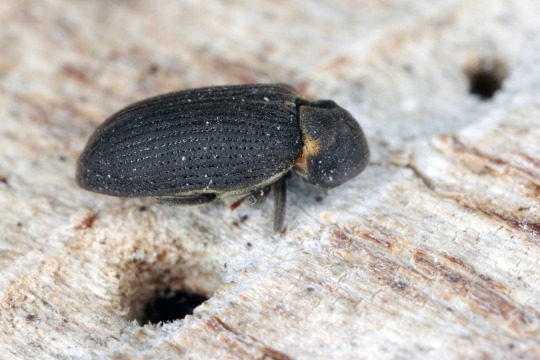
Biology And Habits Of Wood Boring Beetles
Most wood boring beetles go through a complete metamorphosis, meaning they have an egg, larval, pupal, and adult stage. The time it takes to go from egg to adult can vary based on species and temperature but is generally between 2 months and 2 years.
The female beetle will lay her eggs on or near the host tree, where they will hatch and feed on the tree’s soft inner bark. During this phase of development, the larvae may also bore into the tree’s sapwood or heartwood. After reaching adulthood, the beetles will leave their host tree to mate and reproduce.
Woodboring beetles are notorious for causing significant damage to trees and other wooden structures. These pests bore into the wood of their host tree, causing extensive damage to the tree’s vigor and health. In some cases, woodboring beetles can completely destroy a tree. Additionally, these pests may also vector diseases that can further damage or kill the tree.
Wood boring beetles are often complex to control once they have infested a tree or other wooden structure. So, how to get rid of wood boring beetles? Well, to prevent significant infestation, it is essential to regularly inspect trees and other wooded areas for signs of damage and to treat any affected areas as soon as possible. Additionally, maintaining healthy trees by providing proper nutrition and care can help reduce the risk of severe damage caused by wood boring beetles. With careful monitoring and maintenance, you can protect your trees and other wooden structures from the destructive effects of wood boring beetles.
Signs Indicating Wood Boring Beetle Infestation
There are several signs that can indicate a wood boring beetle infestation, including:
Presence of small holes or tunnels in the tree’s bark or wood
Visible sawdust or frass near the tree’s base
Damaged or dying branches or leaves
Discoloration or decay of the tree’s wood
Holes in the bark of the tree for exit routes
Bark that is peeling or cracked
Larvae or adults crawling on the tree or the ground nearby
If you see any of these signs of wood boring beetle infestation on your trees or other wooden structures, take immediate action to treat the affected areas and protect your trees. With regular monitoring and prompt tree borer treatment, you can help minimize the risk of severe damage caused by wood boring beetles.
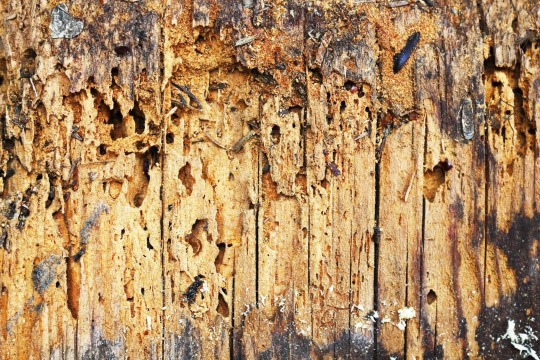
How to Get Rid of Wood Boring Beetles?
There are several options for treating wood boring beetle infestations. The best course of action will depend on the severity of the infestation and the type of beetle involved. Some common treatment options include:
Treat and care infested wood
Apply chemical insecticides to the affected area
Encourage natural predators, such as woodpeckers, to feed on the beetles
Accurate treatment of infested trees
Apply biologically-based insecticides to the affected area
Trunk and soil injection to restrict the growth of the beetles
With prompt treatment, you can help prevent wood boring beetles from causing extensive damage to your trees and other wooden structures. For more information and tips on how to get rid of wood boring beetles infestation, talk to our professional arborist or pest control expert.
Ways to Prevent and Control Wood Boring Beetles
Several steps can be taken to prevent and control wood boring beetles. These include:
Inspecting trees and other wooden structures regularly for signs of infestation, such as holes or tunnels in the bark, frass, or sawdust near the base of the tree, damaged or dying leaves and branches, etc.
Treating infested areas promptly with chemical or biological insecticides
Encouraging natural predators, such as woodpeckers, to feed on the beetles
Injection to trunk and soil to limit the growth of beetles
Maintaining the health of trees by providing proper tree nutrition and care.
By taking these steps, you can help reduce the risk of wood boring beetle infestation and the damage they can cause.
Takeaways
Wood boring beetles are often difficult to control once they have infested a tree or other wooden structure. To prevent significant infestation, it is crucial to regularly inspect trees and other wooded areas for signs of damage and to treat any affected areas as soon as possible.
There are several signs that can indicate a wood boring beetle infestation, including visible sawdust or frass near the tree’s base, damaged or dying branches or leaves, and exit holes in the bark.
Some common treatment methods for wood boring beetle infestations include treating and caring for infested wood, applying chemical insecticides accurately to affected areas, and maintaining health with balanced nutrition. The wood boring beetle treatment cost will vary depending on the severity of the infestation and the type of beetle involved. However, offering tailored treatment to wood boring beetle is crucial.
Original Source: All You Need to Know About Wood Boring Beetles
0 notes